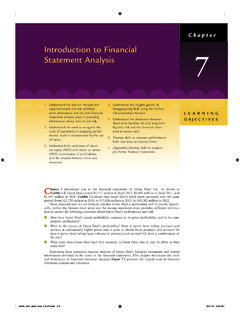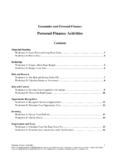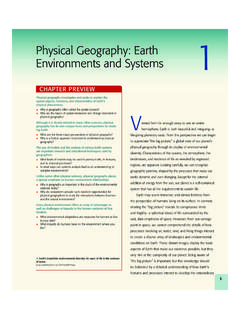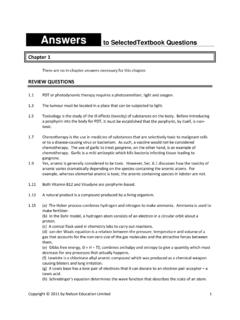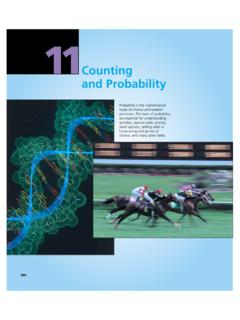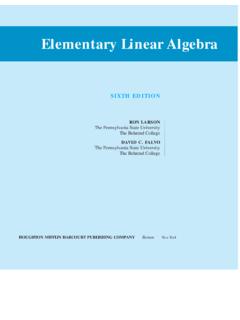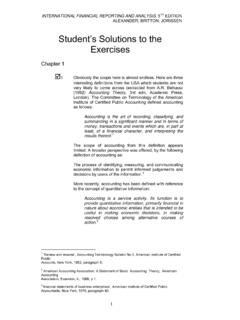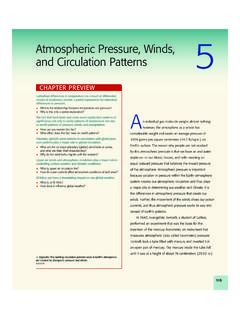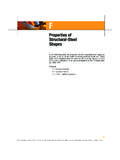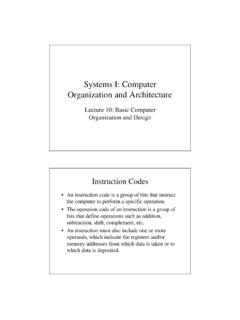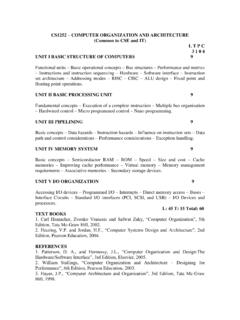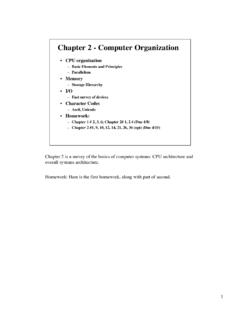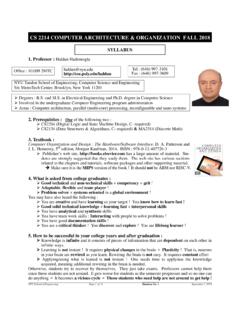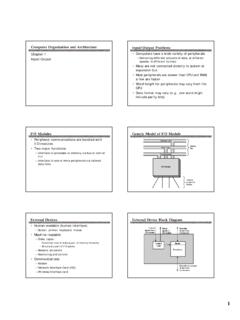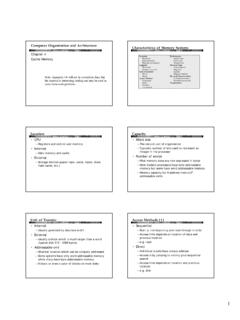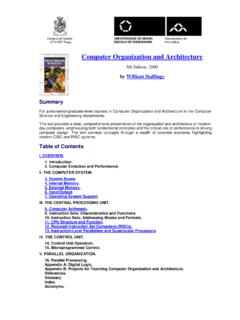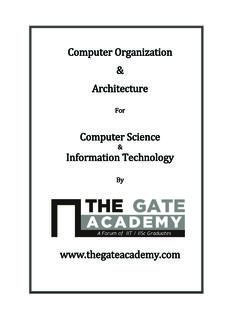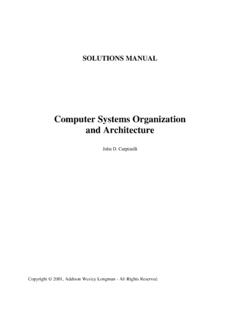Transcription of COMPUTER ORGANIZATION AND ARCHITECTURE …
1 COMPUTER ORGANIZATION AND ARCHITECTURE Themes and Variations ARM Processor WORKBOOK Alan Clements Version 1 [WORKBOOK FOR COMPUTER ORGANIZATION AND ARCHITECTURE : THEME AND VARIATIONS] V 2014 Cengage Learning. All Rights Reserved. May not be scanned, copied or duplicated, or posted to a publicly accessible website, in whole or in part 1 | P a g e INTRODUCTION This workbook has been written to accompany COMPUTER ORGANIZATION and ARCHITECTURE : Themes and Variations and is designed to give students a practical introduction to the ARM processor simulator from Kiel. I have provided examples of the use of the ARM family simulator plus notes and comments in order to allow students to work together in labs and tutorials, or for individual study at home. Before we introduce the simulator, we look at several background topics that are needed before you can begin to write assembly-language level programs.
2 THE INSTRUCTION SET ARCHITECTURE An instruction set ARCHITECTURE , or ISA, is an abstract model of a COMPUTER that describes what it does, rather than how it does it. You could say that a COMPUTER s instruction set ARCHITECTURE is its functional definition. Essentially, the ISA is concerned with a COMPUTER s internal storage (its registers), the operations that the COMPUTER can perform on data (the instruction set), and the addressing modes used to access data. The term addressing mode is just a fancy way of expressing where the data is; for example, you can say that the data is in location 100, or you can say that it s 200 location from here, or you can say, here s the actual data itself . The first part of COMPUTER ORGANIZATION and ARCHITECTURE : Themes and Variations is concerned with the instruction set ARCHITECTURE , and the second part is concerned with COMPUTER ORGANIZATION which described an ISA is actually implemented.
3 Today, the term microarchitecture has largely replaced the COMPUTER ORGANIZATION . In this workbook, we are interested in the ISA, rather than the microarchitecture. REGISTERS A register is a storage device that holds a single data word exactly like a memory location. Registers are physically located on the CPU chip and can be accessed far more rapidly than memory. You can think of a register as a place in which data is waiting to be processed. When computers operate on data, they frequently operate on data that is in a register. For example, to perform the multiplication A = B C, you first read the values of B and C from memory into two registers. Then, you multiply the two numbers in the registers and put the result in a register. Finally, the result is transferred from a register to location A in memory.
4 In principle, there s no fundamental difference between a location in memory and a register. There are just a few registers in a COMPUTER , but millions of storage locations in memory. Consequently, you need far fewer bits to specify a register than a memory location. For example, if a COMPUTER has eight data registers, an instruction requires only three bits to select one of the eight registers to be used by an operation; that is from 000 to 111. If you specify a memory location, you need 32 bits to select one out of 232 possible locations (assuming a 32-bit address space). The size of a register (its width in bits) is normally the same size as memory locations and the size of the arithmetic and logical operations in the CPU. If you have a COMPUTER with 32-bit words, they are held in 32-bit memory locations and 32-bit registers and are processed by 32-bit adders, and so on.
5 There is no fundamental difference between a register and a memory location. If you could store gigabytes of high-speed memory on a CPU chip and you could use very long instruction words ( , with the long addresses needed to specify one individual location) then there would be no point in using registers. If you had a COMPUTER with 4 Gbytes of memory (232 bytes) and wished to have an instruction that could implement C = A + B ( , ADD C,A,B) the you would require typically 16 + 32 + 32 + 32 = 112 bits (the 16 bits represent the number of bits to encode the actual operation and the three 32-bits are needed for the addresses A, B, and C). No mainstream modern COMPUTER has such a long instruction word. Version 1 [WORKBOOK FOR COMPUTER ORGANIZATION AND ARCHITECTURE : THEME AND VARIATIONS] V 2014 Cengage Learning.
6 All Rights Reserved. May not be scanned, copied or duplicated, or posted to a publicly accessible website, in whole or in part 2 | P a g e This warning symbol will appear whenever a particularly important or tricky concept is introduced. PROBLEM SET 1 1. In your own words, explain what a register is in a COMPUTER . 2. How many registers does the 68K have? 3. How many registers does the ARM have? 4. What s the processor with the largest number of registers that you can find? 5. If a COMPUTER has 128 user-accessible general-purpose registers, how many bits are be required to access a register? That is, how many bits does it take to specify 1 out of 128? 6. Suppose a COMPUTER has eight registers and a 24-bit instruction length. A data processing instruction is of the ADD r1,r2,r3 which implements r1 = r2 + r3.
7 How many bits in an instruction can be allocated to specifying an operation if there are four general-purpose registers? PROBLEM SET 2 The following problems are intended to help you understand the history of the COMPUTER . These problems are intended as discussion points and don t have simple right or wrong answers. In order to do these questions you will need to read the Web-based history material that accompanies this text. You will also need to use the web as a research tool. 1. When did the idea of a COMPUTER first occur to people? 2. What is a COMPUTER ? 3. One of the names most associated with the history of computing is John von Neumann. Who was von Neumann? Did he invent the COMPUTER ? 4. When was the first microprocessor created and by whom? 5. What was the form of the first memory used by computers (or computing devices)?
8 6. Who said (and when) There is a world market for maybe five computers . 7. What was the first hobby COMPUTER (personal COMPUTER ) and when was it built? 8. Who was Konrad Zuse? IMPORTANT POINT Never confuse the following two concepts: value and address (or location). A memory location holds a value which is the information stored in that location. The address of an item is where it is in memory and its value is what it is. For example, suppose memory location 1234 contains the value 55. If we add 1 to 55 we get 55 + 1 which is 56. That is, we ve changed the value of a variable. Now, if we add 1 to the address 1234, we get 1235. That s a different location in memory which holds a different variable. The reason for making this point is that it is all too easy to confuse these two concepts because of the way we learn algebra at high school.
9 We use equations like x = 4. When we write programs that use variables, the variables usually refer to the locations of data not to the values. So, when we say x = 4, we actually mean that the memory location called x contains the value 4. Version 1 [WORKBOOK FOR COMPUTER ORGANIZATION AND ARCHITECTURE : THEME AND VARIATIONS] V 2014 Cengage Learning. All Rights Reserved. May not be scanned, copied or duplicated, or posted to a publicly accessible website, in whole or in part 3 | P a g e ADDRESSING MODES An addressing mode is simply a means of expressing the location of an operand. An address can be a register such as r3, or D7, or PC (program counter). An address can be a location in memory such as address 0x12345678. You can even express an address indirectly by saying, for example, the address is the location whose address is in register r1.
10 All the various ways of expressing the location of data are called collectively addressing modes. Suppose someone said, Here s ten dollars . They are giving you the actual item. This is called a literal or immediate value because it s what you actually get. Unlike all other addressing modes, you don t have to retrieve immediate data from a register or memory location. If someone says, Go to room 30 and you ll find the money on the table , they are telling you where the money is ( , its address is room 30). This is called an absolute address because expresses absolutely exactly where the money is. This addressing modes is also called direct addressing. Now here s where the fun starts. Suppose someone says, Go to room 40 and you ll find something to your advantage on the table . You arrive at room 40 and see a message on the table saying, The money is in room 60.
